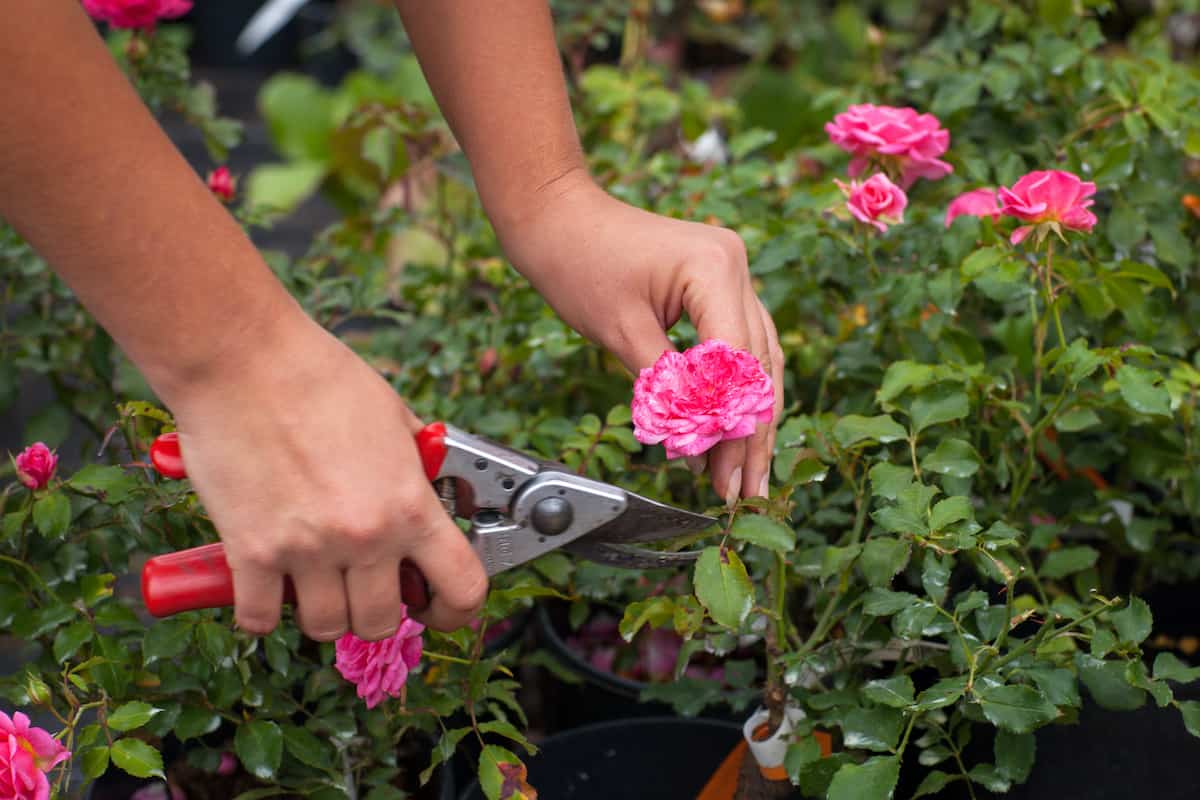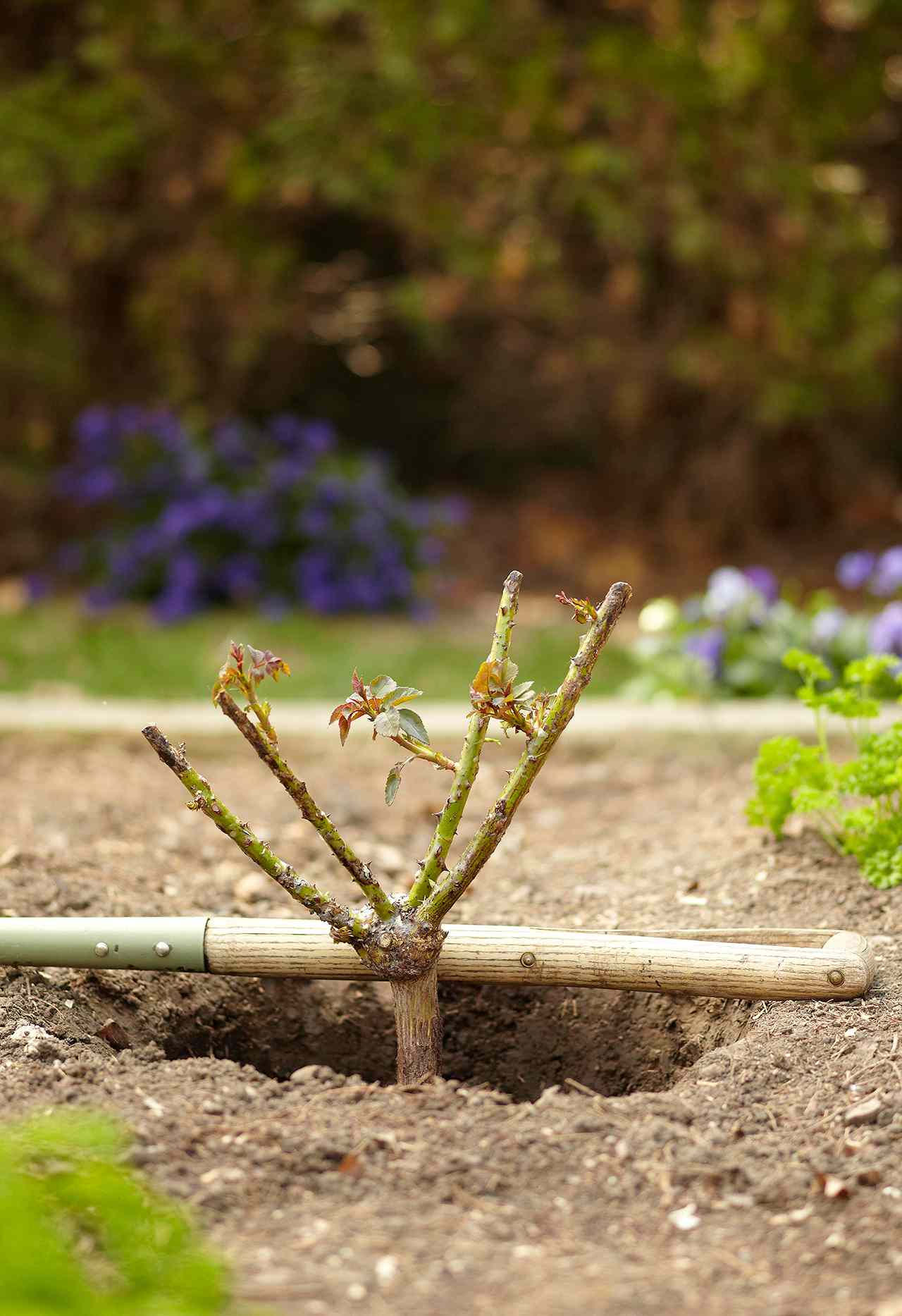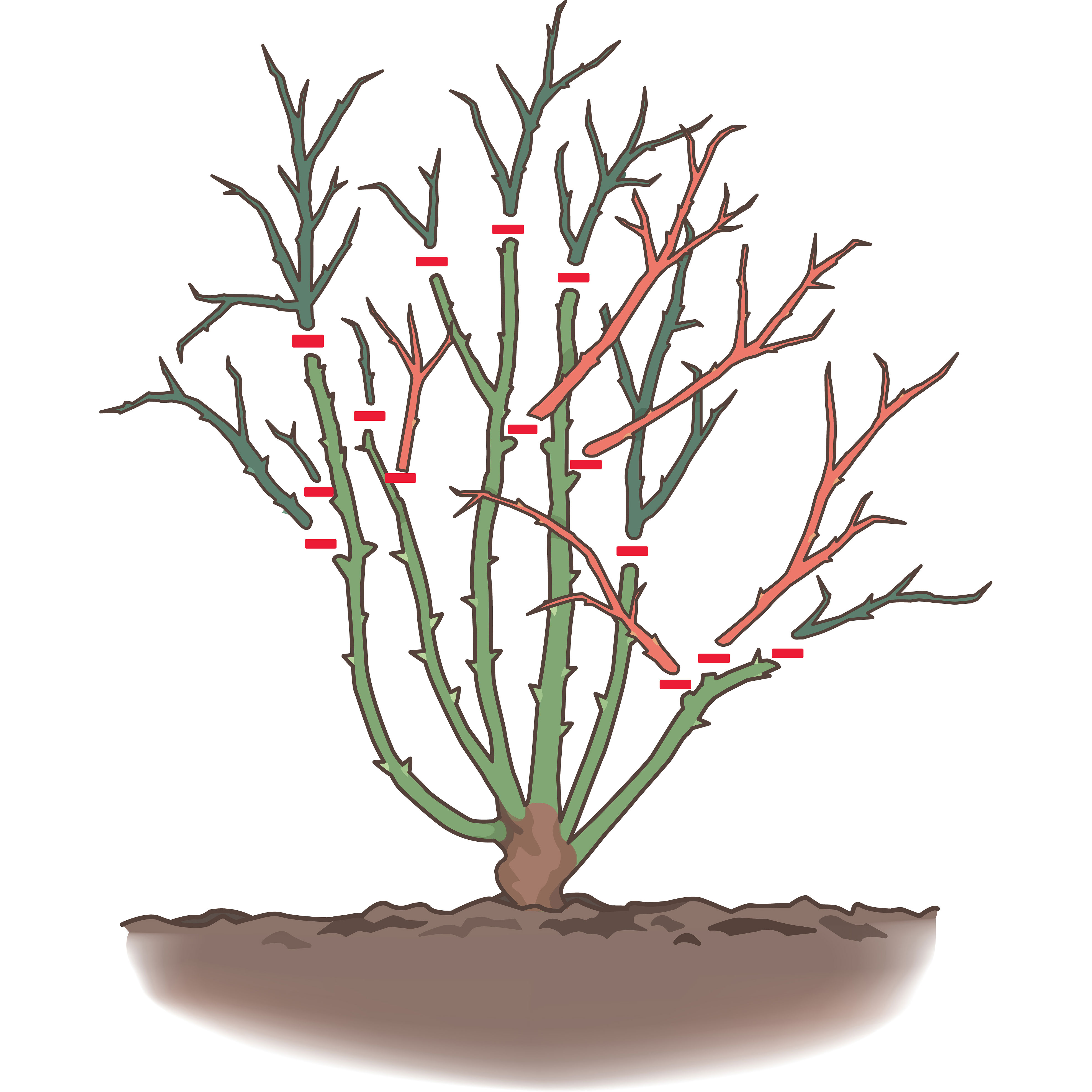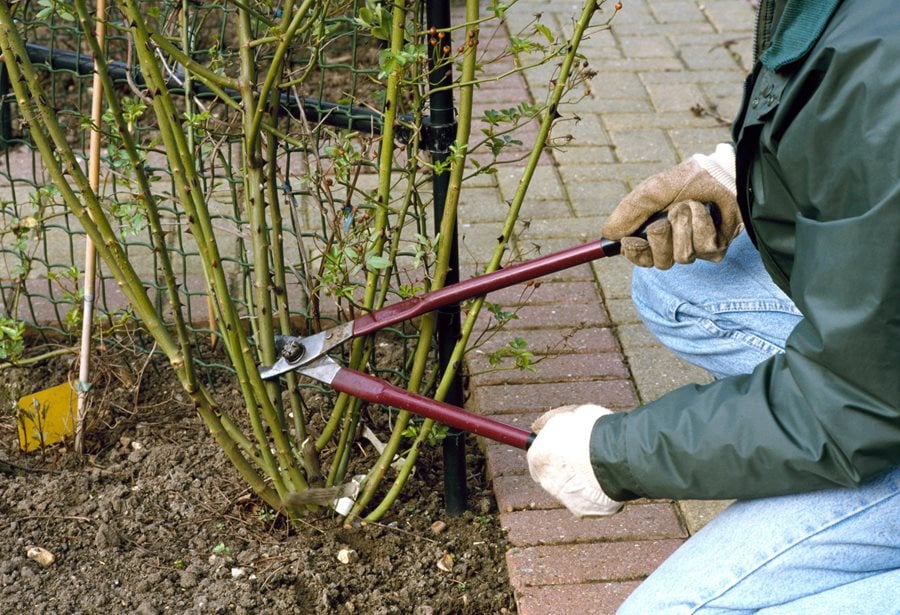Preparing for Pruning: Gathering the Right Tools and Materials
Before you start pruning your roses, it’s essential to gather the right tools and materials. Having the correct equipment will make the pruning process easier, safer, and more effective. Here are some of the necessary tools and materials you’ll need to prune your roses:
Pruning shears, also known as hand pruners or secateurs, are the most critical tool for pruning roses. They are used to cut stems up to 1 inch in diameter and are ideal for shaping and trimming the plant. Look for pruning shears with sharp, clean blades and comfortable grips.
Loppers are long-handled pruning shears that are used to cut thicker stems and branches. They are ideal for cutting back canes and removing dead or diseased branches. When choosing loppers, look for ones with long handles and sharp blades.
Gloves are another essential tool for pruning roses. They protect your hands from thorns and provide grip and traction when handling pruning shears and loppers. Look for gloves made from durable materials, such as leather or synthetic fabrics.
A gardening hat is also a useful tool for pruning roses. It protects your face and neck from thorns and provides shade for your eyes. Look for a hat with a wide brim and a chin strap to keep it secure.
Other materials you may need to prune your roses include a bucket or container to collect cut branches, a disinfectant to clean your pruning tools, and a gardening knee pad or cushion to provide comfort while working.
When choosing pruning tools and materials, consider the quality and durability of the products. Look for tools with sharp blades, comfortable grips, and durable materials. Avoid using low-quality tools that can damage your roses or cause injury.
Understanding Rose Types: Different Pruning Techniques for Different Varieties
Roses come in a variety of types, each with its own unique pruning requirements. Understanding the different types of roses and their specific pruning needs is essential for proper pruning and care. Here are some of the most common types of roses and their pruning requirements:
Hybrid Tea Roses: These roses are known for their large, repeat-flowering blooms and require regular pruning to maintain their shape and promote blooming. Prune hybrid tea roses in late winter or early spring, removing dead or diseased branches and cutting back canes to about 12-18 inches from the ground.
Floribunda Roses: These roses are a cross between hybrid tea and polyantha roses and produce clusters of blooms. They require less pruning than hybrid tea roses, but still need regular maintenance to promote blooming and maintain shape. Prune floribunda roses in late winter or early spring, removing dead or diseased branches and cutting back canes to about 12-18 inches from the ground.
Shrub Roses: These roses are compact and produce blooms throughout the growing season. They require minimal pruning, but still need regular maintenance to promote blooming and maintain shape. Prune shrub roses in late winter or early spring, removing dead or diseased branches and cutting back canes to about 6-12 inches from the ground.
Climbing Roses: These roses are trained to grow up trellises or other supports and require regular pruning to maintain their shape and promote blooming. Prune climbing roses in late winter or early spring, removing dead or diseased branches and cutting back canes to about 12-18 inches from the ground.
English Roses: These roses are a type of shrub rose and produce large, fragrant blooms. They require minimal pruning, but still need regular maintenance to promote blooming and maintain shape. Prune English roses in late winter or early spring, removing dead or diseased branches and cutting back canes to about 6-12 inches from the ground.
By understanding the different types of roses and their specific pruning requirements, you can provide the best care for your roses and enjoy beautiful blooms throughout the growing season.
Step-by-Step Pruning Instructions: A Beginner’s Guide
Pruning roses can seem intimidating, but with the right steps, you can achieve beautiful and healthy blooms. Here’s a step-by-step guide on how to prune roses in spring:
Step 1: Remove Dead or Diseased Branches
Start by removing any dead or diseased branches from the rose plant. Cut the branches off at the base, making sure to disinfect your pruning tools between cuts to prevent the spread of disease.
Step 2: Cut Back Canes
Next, cut back the canes of the rose plant to about 12-18 inches from the ground. This will help to promote new growth and encourage blooming. Make sure to cut the canes at a 45-degree angle, just above a bud eye.
Step 3: Shape the Plant
Once you’ve cut back the canes, shape the plant to maintain its natural shape and promote blooming. Remove any weak or spindly growth, and trim back any branches that are crossing or rubbing against each other.
Step 4: Check for Suckers
Check the base of the rose plant for any suckers, which are shoots that grow from the base of the plant. Remove any suckers, as they can take energy away from the rest of the plant.
Step 5: Inspect the Plant
Finally, inspect the plant for any signs of disease or pests. Make sure to disinfect your pruning tools and remove any infected branches to prevent the spread of disease.
By following these steps, you can prune your roses like a pro and enjoy beautiful and healthy blooms all season long. Remember to prune your roses in late winter or early spring, when the plant is still dormant, to promote healthy growth and encourage blooming.
Common Pruning Mistakes to Avoid
When it comes to pruning roses, there are several common mistakes to avoid. These mistakes can lead to reduced blooming, poor plant shape, and even disease or pest problems. Here are some of the most common pruning mistakes to avoid:
Pruning Too Much or Too Little
One of the most common pruning mistakes is pruning too much or too little. Pruning too much can stress the plant and reduce blooming, while pruning too little can lead to poor plant shape and reduced blooming. To avoid this mistake, prune your roses in late winter or early spring, and remove only the dead, diseased, or damaged branches.
Pruning at the Wrong Time
Pruning roses at the wrong time can also be detrimental to the plant. Pruning in the fall or winter can cause the plant to produce new growth, which can be damaged by frost or cold temperatures. To avoid this mistake, prune your roses in late winter or early spring, when the plant is still dormant.
Not Disinfecting Pruning Tools
Not disinfecting pruning tools is another common mistake to avoid. This can spread disease and pests from one plant to another. To avoid this mistake, disinfect your pruning tools with a solution of 1 part bleach to 9 parts water after each use.
Pruning in the Middle of the Branch
Pruning in the middle of the branch can also be detrimental to the plant. This can cause the branch to die back, and can lead to disease or pest problems. To avoid this mistake, prune your roses at the base of the branch, just above a bud eye.
Not Removing Suckers
Not removing suckers is another common mistake to avoid. Suckers are shoots that grow from the base of the plant, and can take energy away from the rest of the plant. To avoid this mistake, remove any suckers that appear at the base of the plant.
By avoiding these common pruning mistakes, you can help to ensure that your roses are healthy, thriving, and producing plenty of blooms.
After Pruning Care: Tips for Promoting Healthy Growth
After pruning your roses, it’s essential to provide the right care to promote healthy growth and encourage blooming. Here are some tips to help you care for your roses after pruning:
Watering
Water your roses deeply after pruning to help settle the soil and provide enough moisture to support new growth. Aim to provide about 1 inch of water per week, either through rainfall or irrigation.
Fertilizing
Fertilize your roses after pruning to provide essential nutrients for healthy growth and blooming. Use a balanced fertilizer that contains nitrogen, phosphorus, and potassium, and follow the instructions on the label for application rates.
Mulching
Mulch around the base of your roses to help retain moisture, suppress weeds, and regulate soil temperature. Use a 2- to 3-inch layer of organic mulch, such as wood chips or bark, and keep it a few inches away from the plant stem.
Deadheading
Deadheading, or removing spent blooms, can help encourage more blooming and improve the overall appearance of your roses. Remove spent blooms as soon as they fade, and make sure to disinfect your pruning tools between cuts to prevent the spread of disease.
Pest and Disease Management
Keep an eye out for pests and diseases that can affect your roses after pruning. Regularly inspect your plants for signs of infestation or infection, and take action promptly if you notice any problems.
By following these tips, you can help promote healthy growth and encourage blooming in your roses after pruning. Remember to be patient, as it may take some time for your roses to respond to pruning and care.
Pruning for Specific Goals: How to Prune for More Blooms or Better Shape
When pruning roses, it’s essential to consider the specific goals you want to achieve. Whether you’re looking to increase blooms, improve plant shape, or promote healthy growth, pruning can help you achieve your objectives. Here are some tips on how to prune roses for specific goals:
Pruning for More Blooms
If you want to increase blooms, focus on pruning your roses to promote healthy growth and encourage blooming. Remove any dead or diseased branches, and cut back canes to about 12-18 inches from the ground. This will help to promote new growth and encourage blooming.
Pruning for Better Shape
If you want to improve the shape of your roses, focus on pruning to promote a balanced and symmetrical shape. Remove any branches that are crossing or rubbing against each other, and cut back canes to about 12-18 inches from the ground. This will help to promote a more balanced and symmetrical shape.
Pruning for Healthy Growth
If you want to promote healthy growth, focus on pruning to remove any dead or diseased branches. Cut back canes to about 12-18 inches from the ground, and remove any weak or spindly growth. This will help to promote healthy growth and encourage blooming.
Pruning for a Specific Style
If you want to prune your roses to achieve a specific style, such as a formal or informal shape, focus on pruning to promote the desired shape. Remove any branches that are not in line with the desired shape, and cut back canes to about 12-18 inches from the ground. This will help to promote the desired shape and style.
By pruning your roses with specific goals in mind, you can achieve the desired results and enjoy beautiful, thriving roses.
Conclusion: The Rewards of Proper Spring Rose Pruning
Proper spring rose pruning is essential for promoting healthy growth, encouraging blooming, and maintaining the overall appearance of your roses. By following the steps outlined in this article, you can enjoy the many rewards of proper spring rose pruning, including:
Increased Blooms
Proper spring rose pruning can help to increase the number of blooms on your roses, making them a beautiful and fragrant addition to your garden.
Improved Plant Shape
Pruning your roses in the spring can help to improve their shape and appearance, making them a stunning focal point in your garden.
Healthy Growth
Proper spring rose pruning can help to promote healthy growth and prevent disease and pests, ensuring that your roses remain strong and thriving throughout the growing season.
Reduced Maintenance
By pruning your roses in the spring, you can reduce the amount of maintenance required throughout the growing season, making it easier to enjoy the beauty and fragrance of your roses.
Increased Enjoyment
Proper spring rose pruning can help to increase your enjoyment of your roses, whether you’re enjoying their beauty and fragrance in your garden or cutting them for arrangements and bouquets.
By following the steps outlined in this article, you can enjoy the many rewards of proper spring rose pruning and keep your roses healthy, thriving, and beautiful throughout the growing season.
Conclusion: The Rewards of Proper Spring Rose Pruning
Proper spring rose pruning is a crucial step in maintaining the health and beauty of your roses. By following the steps outlined in this article, you can enjoy the many rewards of proper spring rose pruning, including increased blooms, improved plant shape, and healthy growth.
Remember, pruning your roses in the spring is a simple and effective way to promote healthy growth and encourage blooming. By removing dead or diseased branches, cutting back canes, and shaping the plant, you can help your roses thrive and produce beautiful blooms.
In addition to the benefits of pruning, proper spring rose care also includes providing your roses with the right amount of water, fertilizer, and mulch. By following these simple steps, you can help your roses grow and thrive, and enjoy the beauty and fragrance of these stunning flowers.
Whether you’re a seasoned gardener or just starting out, proper spring rose pruning is a skill that’s easy to learn and can make a big difference in the health and beauty of your roses. So why not give it a try? With a little practice and patience, you can become a pro at pruning your roses and enjoy the many rewards of proper spring rose care.
By following the steps outlined in this article, you can enjoy the many benefits of proper spring rose pruning and keep your roses healthy, thriving, and beautiful throughout the growing season.







